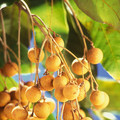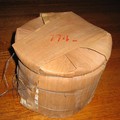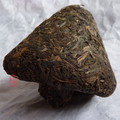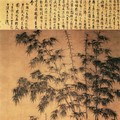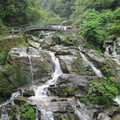Making pu-erh tea: Pan-frying
„“

Video Tags: China, Pu-erh, Tea production, Yunnan
- Discussion: 0 comments
- Write a comment
Teas - Pu-erh
YouLe 2013 - blind tasting set 6
 1 review
1 reviewdense, rich, bitter-sweet, fruity aroma, full body floods the whole mouth and gives a...
2012 Chawangpu Jingmai Gu Shu Xiao Bing
 1 review
1 reviewThis tea is from Jingmai Da Zhai, grown on the Da Ping Zhang area, and is considered...
2011 "Zi Qi Dong Lai" Ripe Puerh Cake
 1 review
1 review"Zi Qi Dong Lai" : The Purple Air coming from the east -- a propitious omen (from the...
2012 Chawangpu Yiwu Zhangjiawan Gu Shu
 0 reviews
0 reviewsOur Yiwu gushu for this year comes from an old village in Mansa area - Zhang Jia Wan...
2005 Boyou TF 0508M Ripe Puerh Cake
 1 review
1 reviewBoyou was founded in 2005, now is one of the factories which still adhere to the...
2012 Menghai "Spring of Menghai" Raw
 1 review
1 reviewPremium blend of first flush of spring tea * Batch 201This is a newer Menghai...
Quotes - Pu-erh
„cha qi; 茶气 - Tea nature. The inherent energetic qualities in tea. That which makes it tea. Sometimes rather unsatisfactorily interpreted as 'tea energy'; translating qi as energy suggests perhaps a rather too narrow idea of qi but it is an interesting term to consider since many people use the term. Ideas and experiences of cha qi vary considerably; the taste of tea, the appearance of the leaves (particularly after steeping i.e. the life in the tea), any physical or psychological experiences one may have as a result of drinking tea are all aspects of cha qi. One cannot satisfactorily dissociate one from the other just as one cannot isolate sunshine from wind, which are both manifestations of weather, tian qi. If it did not have cha qi it wouldn't be tea, it would be something else. From a western point of view perhaps, cha qi is due, in some good part, to the presence of caffeine, theine, etc. The active constituents.“

Quotes Tags: China, Experiencing tea, Pu-erh
Video - Pu-erh
Teas
2011 Mengmao Lao Shu Ye Sheng Xiao Bing 100g
 1 review
1 review2011 Spring harvest. This material come from Baoshan area, 2600 meters high mountain closed with Mengmao...
2005 Boyou TF 0508M Ripe Puerh Cake
 1 review
1 reviewBoyou was founded in 2005, now is one of the factories which still adhere to the strictest sanitary...
2006 Changtai Long Ma Rui Ming "Dragon Horse"
 1 review
1 reviewThis cake is composed of Lancang and Menghai area selected materials.After 5 years aging in dry storage,...
Theme
Tea by region
We will help you with tea selection.
Do you like quality loose tea?
We will help you to find the right one for you. Be inspired by tea ratings of other tea lovers. Rating stars could help you.


Review your cup of tea.
Review the tea you are drinking and help other tea lovers to find the right cup of tea.



Quotes
„The container in which the tea is steeped or teapot should also be warmed beforehand so that the tea does not immediately cool down.“



 Shops
Shops Share on Facebook
Share on Facebook






